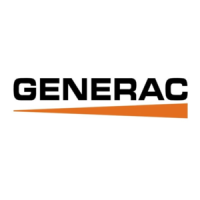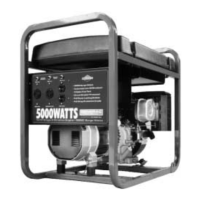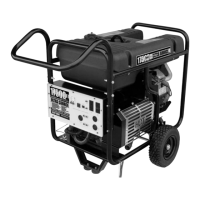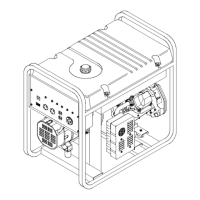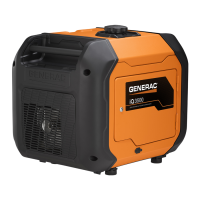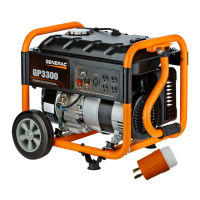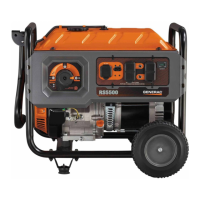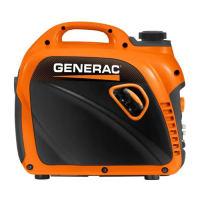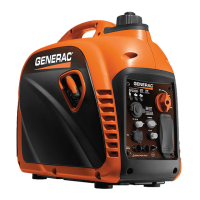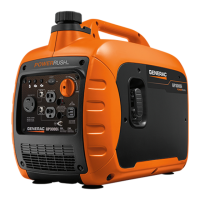3
• Before installing or servicing this (and related) equipment, make
sure that all power voltage supplies are positively turned off at
their source. Failure to do so will result in hazardous and pos-
sibly fatal electrical shock.
• Connecting this unit to an electrical system normally supplied
by an electric utility shall be by means of a transfer switch so as
to isolate the generator electric system from the electric utility
distribution system when the generator is operating. Failure to
isolate the two electric system power sources from each other
by such means will result in damage to the generator and may
also result in injury or death to utility power workers due to
backfeed of electrical energy.
• Generators installed with an automatic transfer switch will
crank and start automatically when NORMAL (UTILITY) source
voltage is removed or is below an acceptable preset level. To
prevent such automatic start-up and possible injury to person-
nel, disable the generator’s automatic start circuit (battery
cables, etc.) before working on or around the unit. Then, place
a “Do Not Operate” tag on the generator control panel and on
the transfer switch.
• In case of accident caused by electric shock, immediately
shut down the source of electrical power. If this is not pos-
sible, attempt to free the victim from the live conductor. AVOID
DIRECT CONTACT WITH THE VICTIM. Use a nonconducting
implement, such as a dry rope or board, to free the victim from
the live conductor. If the victim is unconscious, apply first aid
and get immediate medical help.
• Never wear jewelry when working on this equipment. Jewelry
can conduct electricity resulting in electric shock, or may get
caught in moving components causing injury.
FIRE HAZARDS
• Keep a fire extinguisher near the generator at all times. Do NOT
use any carbon tetra-chloride type extinguisher. Its fumes are
toxic, and the liquid can deteriorate wiring insulation. Keep the
extinguisher properly charged and be familiar with its use. If
there are any questions pertaining to fire extinguishers, consult
the local fire department.
EXPLOSION HAZARDS
• Properly ventilate any room or building housing the generator to
prevent build-up of explosive gas.
• Do not smoke around the generator. Wipe up any fuel or oil
spills immediately. Ensure that no combustible materials are left
in the generator compartment, or on or near the generator, as
FIRE or EXPLOSION may result. Keep the area surrounding the
generator clean and free from debris.
• All fuel types are potentially FLAMMABLE and/or EXPLOSIVE
and should be handled with care. Comply with all laws regulat-
ing the storage and handling of fuels. Inspect the unit’s fuel
system frequently and correct any leaks immediately. Fuel
supply lines must be properly installed, purged and leak tested
according to applicable fuel-gas codes before placing this
equipment into service.
• Diesel fuels are highly FLAMMABLE.
STANDARDS INDEX
Applicable national, state, or local laws, codes, and regulations
pertaining to the installation of engine-generator power systems
must be strictly complied with. Always use the current accept-
able version or edition of the applicable code or standard. In the
absence of pertinent local laws and standards, the following pub-
lished booklets may be used as a guide:
1. National Fire Protection Association (NFPA) 70: The NATIONAL
ELECTRIC CODE (NEC) *
2. NFPA 10: Standard for Portable Fire Extinguishers *
3. NFPA 30: Flammable And Combustible Liquids Code *
4. NFPA 37: Standard for Stationary Combustion Engines And Gas
Turbines *
5. NFPA 54: National Fuel Gas Code *
6. NFPA 58: Standard for Storage And Handling Of Liquefied Petroleum
Gases *
7. NFPA 68: Standard On Explosion Protection By Deflagration Venting
*
8. NFPA 70E: Standard For Electrical Safety In The Workplace *
9. NFPA 99: Health Care Facilities Code *
10. NFPA 101: Life Safety Code *
11. NFPA 110: Standard for Emergency and Standby Power Systems *
12. NFPA 211: Standard for Chimneys, Fireplaces, Vents, and Solid Fuel
Burning Appliances *
13. NFPA 220: Standard on Types of Building Construction *
14. NFPA 5000: Building Code *
15. International Building Code **
16. Agricultural Wiring Handbook ***
17. ASAE EP-364.2 Installation and Maintenance of Farm Standby
Electric Power ****
This list is not all inclusive. Check with the Authority Having Local
Jurisdiction (AHJ) for any local codes or standards which may be
applicable. The above listed standards are available from the fol-
lowing internet sources:
* www.nfpa.org
** www.iccsafe.org
*** www.rerc.org, Rural Electricity Resource Council P.O. Box
309Wilmington, OH 45177-0309
**** www.asabe.org, American Society of Agricultural & Biological
Engineers2950 Niles Road, St. Joseph, MI 49085
Changes to previous standards: The National Building Code was
superseded by the International Building Code and/or NFPA 5000
Building Code. The local AHJ will determine which if either applies.
.
CALIFORNIA PROPOSITION 65 WARNING
Engine exhaust and some of its constituents are known
to the State of California to cause cancer, birth defects
and other reproductive harm.
CALIFORNIA PROPOSITION 65 WARNING
This product contains or emits chemicals known to the
State of California to cause cancer, birth defects and
other reproductive harm.
Safety Rules
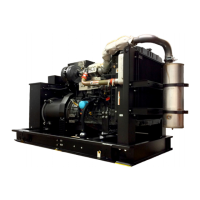
